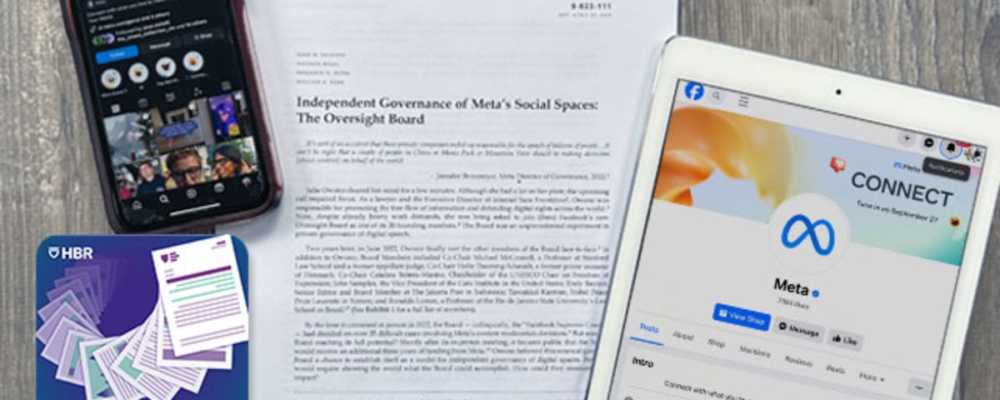With more data available than ever before, why would any executive gamble on a hunch—especially for decisions that involve their own employees?
An emerging field that uses data to study human behavior at work, “people analytics” is beginning to transform the workplace and significantly impact hiring and productivity, says Jeffrey T. Polzer, the UPS Foundation Professor of Human Resource Management at Harvard Business School. His recent paper probes how organizational researchers should study people analytics practices, which could touch the work of nearly all managers and employees.
People analytics, Polzer writes in Research in Organizational Behavior, could inform pressing questions such as: “Who are the best candidates to hire or promote? Are employees maintaining their sense of well-being? Are they collaborating effectively and being productive, even when working remotely? Who is likely to leave?”
Yet, at the same time, Polzer notes that people analytics could also be used in more worrisome ways, raising concerns about employers that monitor every keystroke in an attempt to control and micromanage employee behavior.
“This has the potential to be very powerful, both in positive and concerning ways,” Polzer says. “And it’s only going to become more pervasive as we move forward.”
Data, data, everywhere
Over the past two decades, the emergence of “big data” has triggered enormous shifts in how organizations make decisions in business, science, medicine, government, and many other fields, including professional sports. Artificial intelligence (AI) is also having its moment, with the rise of ChatGPT and the ripples through the tech and content worlds that it continues to generate.
Some big data projects have sought to solve significant problems, such as tracking the spread of epidemics, reducing congestion on highways, or finding ways to detect fraudulent transactions.The trend toward people analytics, Polzer says, is a logical extension of the era of big data, as the science of processing and identifying patterns in large datasets extends to the actions of employees. The term emerged in the early 2000s as computers, data storage, and the internet grew faster and more capable.
In its most basic form, people analytics is defined as taking a “data-driven approach to address employee-related decisions and practices,” says Polzer.
The digital transformation of organizations is also driving the trend, generating “digital trace data”—records of employee behavior captured on devices central to performing jobs everywhere, from the office to the factory floor to the job or delivery site.
Spurred by advancements in computational social science and related fields, people analytics is on a trajectory of significant growth as more organizations see value in using employee data to make better decisions. The trickier question for companies will be how to use the information responsibly and transparently.
How to use people analytics
The most obvious applications of people analytics involve talent and performance—determining the qualities that distinguish a company’s best managers and strongest teams and identifying growth and development opportunities.
As the field evolves, companies are applying people analytics to fundamental business processes. For example, behavioral data can help sales teams optimize their outreach tactics. It could highlight bottlenecks in engineering, product development, and factory operations. “The idea here is that organizations can help employees use their own data to better understand their work patterns along with paths to improvement,” he says.
Issues of trust and transparency
People analytics will inevitably highlight tensions if employees wonder whether and how companies will use digital trace data and survey responses. Employees may rightly ask, “If the organization is collecting data or meta-data about meetings, emails, and chats, then who is seeing the data that I’m generating?” Polzer says.
Organizations have to think comprehensively about these issues and establish transparent policies and practices to gain the support of their employees and reduce any wariness, Polzer says. However, even the question of transparency is a tricky one. For instance, some algorithms are reaching levels of complexity that are challenging to explain, and even good explanations of models can quickly become outdated. When algorithms are implemented poorly, employees may try to game them to get ahead, focusing narrowly on what is measured rather than finding the best ways to be effective.
There’s also the issue of regulation. Specific data privacy regulations already in place, such as the European Union’s General Data Protection Regulation (GDPR), impose requirements on multinational employers to protect both employee and customer data. And new laws may be on the horizon, shaping how organizations respond.
“How you put this into practice,” Polzer says, “matters a lot.”
“Harvard Business School is the graduate business school of Harvard University, a private research university in Boston, Massachusetts. It is consistently ranked among the top business schools in the world and offers a large full-time MBA program, management-related doctoral programs, and executive education programs.”
Please visit the firm link to site





